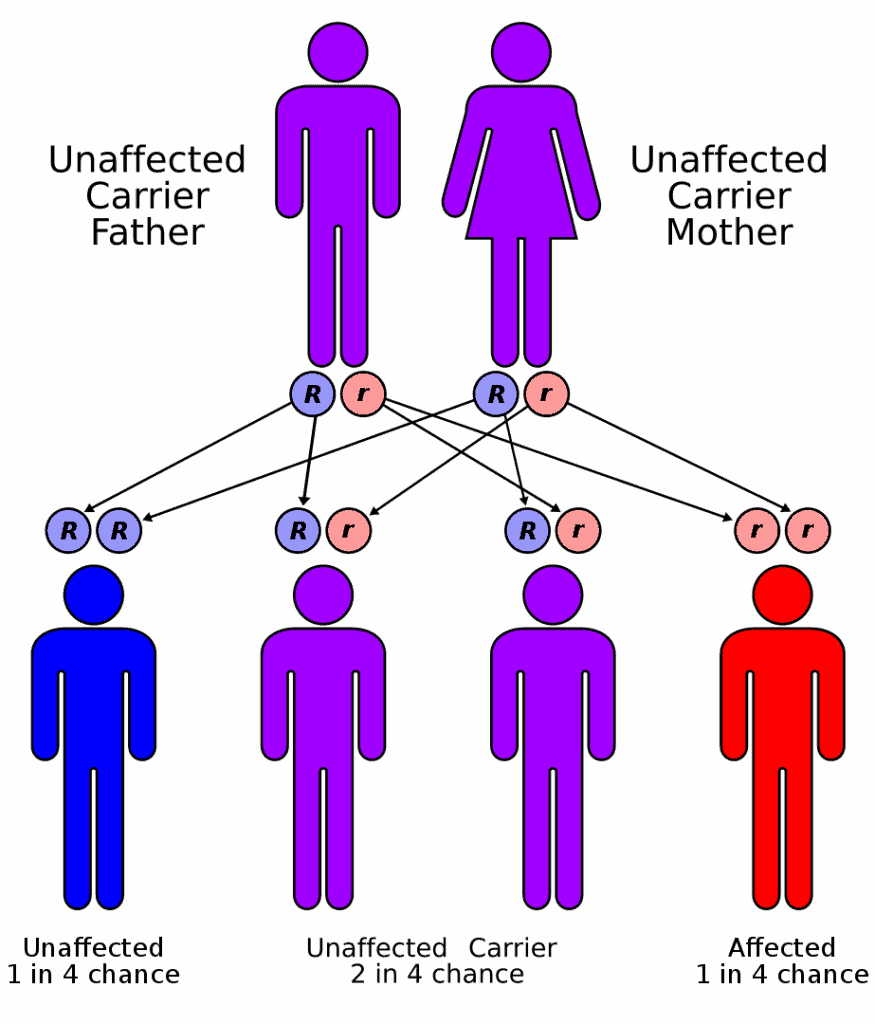
When it comes to the Fugate family, you may think of the color blue. It’s not every day you get to see a person whose skin color is blue. This makes it easier to understand why people found the Fugate family as an interesting topic. It’s disheartening, but many of the members of the Fugate family remained hidden because of the uniqueness of their situation. You can’t truly blame either side, especially since it sounds almost impossible if you think about it. The possibility of the color blue as a skin tone becoming a hereditary trait feels like a cartoon show. Still, it was an actual situation for the family that was mixed with half-French and half-American. In fact, the Fugate family still exists to this day and their descendants still carry this gene.
Did you back-read just now? We’re betting you did. Yes. It’s actually natural for some people to have blue skin. And we’re not talking about blue-black skin bruises you get from a terrible fall. We’re talking about the real deal. Our world has interesting ways to adapt for survival and sometimes it can come with an aesthetic change. Blue skins like the smurfs aren’t actually that far-fetched. The most notable folks with blue skin are the Fugate family. A group of people with a very rare skin disease. We’re sure you have a lot of questions. It’s not hard to imagine the thoughts running through your head. So why don’t we get started on discussing the blue people of the Appalachian mountains?
Fugate Family Origins
The Fugate family head, Martin Fugate, came from France to restart his life in America with a local bride. Though they were unrelated, the gene started from them. This is because both Elizabeth Smith and Martin Fugate carried the genes for it, making it impossible not to be passed down. It was their children that committed incest afterward.
It wasn’t much of a problem before. Having an inbred family was once common in the past. In the 1910s, Kentucky didn’t have easy access to transportation. Because of this, people often married their cousins instead. Nowadays, incest is a moral issue that many people debate about. However, the biggest issue regarding inbred families is not the morality of it all, but the hereditary problems that follow.
The eastern mountain people of Kentucky are called the Appalachians have been known to inbreed. This means that they marry and have children with their blood relatives. For Appalachian people, inbreeding is a stereotype. However, it is also true that many Appalachians have committed incest.
Inbred humans often carry many mental and physical disorders. An example would be the Whitakers of West Virginia, who have been called awful names like inbred hillbillies despite the lack of proper education and care for them. This stems from a stereotype of Appalachian people inbreeding.
For the Fugate Family, their inbreeding wasn’t the source of them turning blue, but it did help preserve the skin condition in the family genome.

The Reason Why They Turned Blue
The Fugate family has earned many nicknames over time. They’ve been called the Blue People of Kentucky, the Huntsville Subgroup, and the Blue People of Troublesome Creek Kentucky. This is because some members of the family had blue skin. A lot of people had different stories regarding the Fugate family’s skin origin, but the truth is that they have a genetic disease called methemoglobinemia.
Methemoglobinemia (MetHb) can be gained by hereditary means or through the consumption of specific medicines and food. The condition is a side-effect of the overproduction of methemoglobin. This makes oxygen distribution difficult to pass through body tissues, making them blue in color.
Methemoglobinemia in the Fugate family is passed down genetically. In most cases, both parents do not suffer from it, but both carry the gene. That wasn’t the case for Martin Fugate and Elizabeth Smith, as they clearly have blue skin.
Fugate Family Notable Members
Martin Fugate
The Fugate family head was named Martin Fugate. He was an orphan of French descent. Martin migrated to the United States and settled in Troublesome Creek, Kentucky. He had visible dark blue skin.
Elizabeth Smith
Elizabeth Smith was the wife of Martin Fugate. She was a red-headed American who also carried blue skin in her genes. She gave birth to seven children. Out of the seven, four inherited their father’s blue skin. It is unclear whether Elizabeth herself also had blue skin. All Fugate family photos have always been in black and white.
Luna Fugate
Luna was the child of Levi Fugate and his first cousin, Hannah Ritchie. She had seven other siblings. Luna was also blue-skinned like her great grandfather, Martin. It had been a few years since the last of Blue Fugate. She is also a direct descendant of Benjamin Stacy, the last blue Fugate family member.
Benjamin Stacy Fugate
Benjamin Stacy was the last of the Fugate family members to have blue skin and lived a healthy life. He was born in the 1970s in a maternity ward of Hazard, Kentucky. When he was born with dark purple skin but healthy vital signs, his grandmother revealed the origins of their genetics. This clarified that a rare gene that only the Appalachians have was passed down to Benjamin.
As he grew older, Benjamin lost his blue skin tone. It only appeared on his lips and fingertips when he was feeling chilly or agitated. This goes for most of the Fugate descendants as well. Benjamin has since left Kentucky and moved to Alaska.
Cure For The Blues
After being blue for one hundred and sixty-two years, the Fugate family members weren’t completely shunned by Kentucky locals. They had always been blue, and no one questioned it. It was only until Patrick and Rachel Ritchie reached out to Doctor Madison Cawein, a hematologist, for help.
The cure for the methemoglobinemia they were suffering from was to help the siblings feel less uncomfortable with themselves. The Appalachian blue skin was a clear indication of inbreeding, and you can only imagine the fear they were experiencing.
Since most of the Fugate family members refused to leave for treatment and preferred seclusion, Dr. Cawein visited the family instead. Dr. Cawein realized that the Fugate family suffered from methemoglobinemia because of a study regarding an isolated Eskimo population in Alaska. Along with Nurse Ruth Pendergrass, he found a solution by injecting a hundred milligrams of methylene blue to decrease the blueness of the Fugate family. However, the effect wears off after urinating. As a result, Dr. Cawein left pills for the family to drink daily. This was so that the descendants of the Fugates would feel less ashamed to leave their homes.
The Fugate Family Portrait
The Fugate family portrait that circulates the Internet is actually just a painting Walt Splitzmiller was commissioned to do so. It depicts what he believes is an accurate depiction of the 1800s. Walt was only told to draw a family where the father and a few children had blue skin. The rest of the painting’s accuracy was based on his own research.
The painting has since then been a scanned copy posted without Walt’s permission many times. The copy that floats about on the Internet is of inferior quality. Walt kept the painting safe knowing how much it meant not just in terms of financial necessity, but also for their family and the Fugate family.
There’s only one original slide painting of it in existence. He exchanged emails with them and decided to digitize the painting as well. Now a high-resolution image of the famous Fugate family portrait circles the net.
The portrait was commissioned by Science 82, a magazine that did an article regarding the Fugate family entitled, “The Blue People of Troublesome Creek.”
Other Causes of Blue Skin Disorder
While people with blue skin are widely associated with the blue Fugates of Kentucky, there are many other ways to contract it. People with blue skin could also be the type of people who consume silver by a handful.
Paul Karason was a redhead before eating a handful of health supplements containing colloidal silver. He became one of the very few blue-skinned people. The Internet loved him and he was dubbed “Papa Smurf” because of his white beard. Take note that Paul’s case was severe. He had a disease called Argriya.
There’s also the possibility of the Blue Man Syndrome. The cause for Blue Man Syndrome is Amiodarone. Doctors used this medicine for antiarrhythmic relief. Though its effects are not as permanent as what the famous blue family had.
Are There Any More Blue Skin People Now?
The Fugates of Kentucky’s descendants no longer have any blue Fugate babies around. Kentucky blue people are now unheard of compared to their earlier days. This is thanks to more people coming in from other towns and the Fugates marrying outsiders from their families. Whether the hills of eastern Kentucky have seen their last blue man or not is unknown. It’s only a matter of time before we develop a better cure through science. There’s definitely more than just the Fugate family that’s carrying this recessive gene.
Was this page helpful?
Our commitment to delivering trustworthy and engaging content is at the heart of what we do. Each fact on our site is contributed by real users like you, bringing a wealth of diverse insights and information. To ensure the highest standards of accuracy and reliability, our dedicated editors meticulously review each submission. This process guarantees that the facts we share are not only fascinating but also credible. Trust in our commitment to quality and authenticity as you explore and learn with us.


